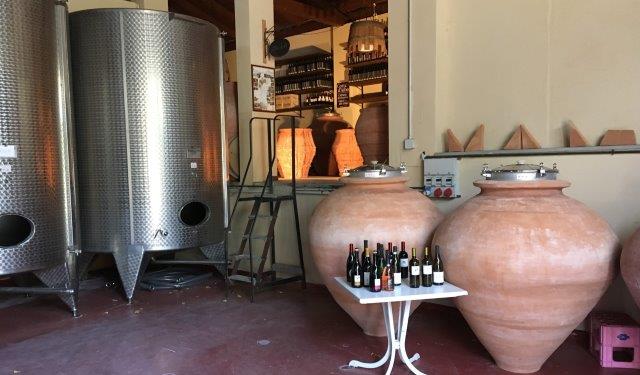The Changing World of Wine

14 May 2018
The Wine World Continues to Change
There is an old French saying, which goes “Plus ca change, plus c’est la même chose”, which roughly means ‘the more it changes, the more it stays the same’. This erudite expression can be applied to many things - such as Governments - and to a certain extent, applies to wine. Over hundreds of years, winemaking has changed significantly, with accelerated change in the last fifty years. Yet it remains an enjoyable (hopefully!) beverage made from grapes.
Back in the times of the Greeks and Romans, wine was fermented in large terracotta jars. Later, large wooden vessels were used, replaced then by cement tanks and latterly stainless steel. This last change came in with a great deal of other changing technology, which meant the temperature of fermentation could be controlled very accurately, together with many other techniques, such as cold maceration pre-fermentation, carbon-dioxide monitoring, pumping-over, etc. Whilst stainless steel tanks offer a great many advantages in terms of winemaking, some winemakers have decided to reintroduce the old methodology, at least in part, with a view to increasing the complexity, style and flavour profile of the resultant wines. Back to the future?
In Italy, for example, there is a wine Estate called Corte d’Aibo in the hills around Bologna, which ferments part of its production in large terracotta jars (pictured) and then blends this wine with that from production in stainless steel tanks. The result is a wine with greater depth, firmer structure and more ‘dimensions ‘. Another wine producer which has gone back to the ‘old ways’ is the world-renowned Chateau Pape Clement in the Pessac Leognan region of Bordeaux. Here, the red wines are fermented partly in wooden vats, partly in resin-lined cement and partly in stainless steel. The winemakers consider that his combination adds greater character and finesse than fermentation purely in stainless steel.
This chateau has also changed the way it matures its wine. Not so long ago, all the wine was matured in new oak barrels, producing big red wines with massive tannic structure which needed many years laying down before drinking. But times have changed, and people are no longer prepared to wait so long for their wines to reach maturity and nor do they want so much tannin. Thus only 40 % of the barrels are new, the remainder having been previously used for other vintages and thus giving less tannin.
Apart from the big changes brought about by technology, other changes have resulted from changing tastes in wine and to some extent fashion. We can all remember drinking Liebfraumilch, even though we may not admit to it publicly. But tastes have changed from the semi-sweet wines from Germanic grape varieties, becoming drier and more sophisticated. Changes which have happened in the New World as well as the Old.
In New Zealand, back in 1981, the most common grape variety was another Germanic variety – Muller Thurgau. Virtually no wine was exported, all of it being consumed on the domestic market. But as tastes changed, other grape varieties, such as Sauvignon Blanc, were planted and these wines had an international appeal. Thirty years later in 2011, only 30% of New Zealand wine was consumed within the country, the remainder being exported to markets worldwide. A big change in a very short period of time.
Fashion can also play its part in changing wine consumption, which then affects what is produced. Much of this is lead by the marketers, tapping into a perceived gap in the market which can produce big profits and creating or feeding the demand. Wines in this category are what I call the ‘Three P’s’ – Prosecco, Pinot Grigio and Picpoul de Pinet. Go back as little as twenty years or so and most people had never heard of any of them. Now it seems that they are all on every wine list in the UK! They all have their place, but their appeal is often exaggerated and there are far better alternatives at the same price.Back in the New World, other grape varieties are now being planted with great success and producing interesting wines – Albarinho in New Zealand, Pinot Bianco in Australia. Hooray for alternatives to the ubiquitous Chardonnay and Cabernet Sauvignon.
